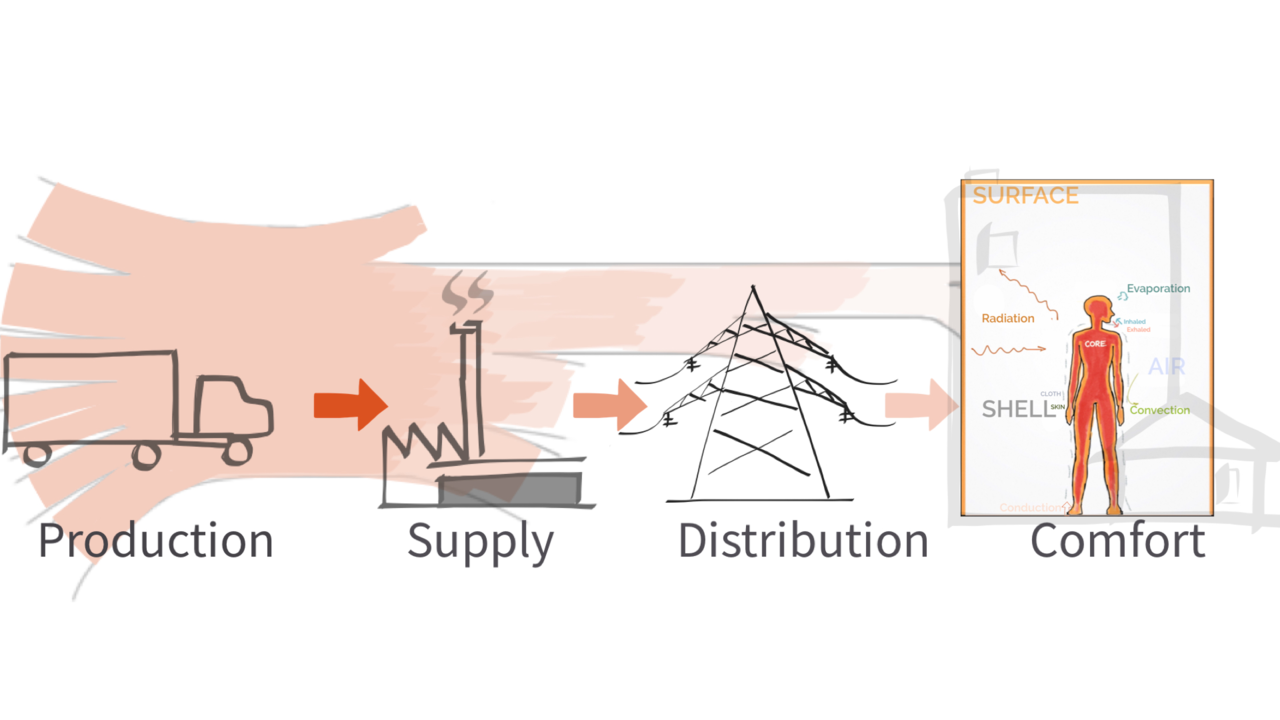Princeton University School of Architecture
Announces the Final Public Oral Exam of Hongshan Guo
“ENERGY RE-CONDITIONED FOR THERMAL COMFORT”
Tuesday, May 7, 2019, 09:00 a.m.
S-118, Architecture Building
Committee
Forrest Meggers (Princeton SoA)
Axel Kilian (MIT)
Aletheia Ida (The University of Arizona)
William W. Braham (University of Pennsylvania)
Masanori Shukuya (Tokyo City University, remote)
Tomonari Yashiro (University of Tokyo, remote)
Marco Simonetti (Politecnico di Torino, remote)
ABSTRACT: Energy has been delivered to buildings and households to make sure rooms are comfortable for occupants. We currently think of this delivery in the isolation as it heats and cools individual spaces. The heating and cooling of buildings have consequently become more about hitting a setpoint instead of aligning the delivery of comfort to humans with the effective and readily available upstream sources.
The thesis of this dissertation is finding the most effective pathway to supply comfort to people. The work begins with the examination of the fundamental assumptions of thermal comfort models using an exergetic approach to insert the occupants into the energy delivery chain. Second, the research examines how environmental parameters such as relative humidity and mean radiant temperatures are oversimplified in energy analyses. Finally, this is connected with the analysis of sourcing the supplied exergy accordingly was also investigated within the scope of this dissertation.
The research is organised into three corresponding sections, each containing three projects. In the first section, a conceptual energy delivery framework was proposed, upon which the feasibility of using human body exergy model was investigated and a new analytical human body exergy model proposed. Varying certain inputs to the model, such as the relative humidity and the mean radiant temperature, can cause the results of the human body exergy model to vary significantly. Unlike relative humidity, mean radiant temperature is more challenging to measure and model. This radiant connection between the occupants and their surroundings is the focus of the second section. Beginning with a critique on the spatial limitations of conventional measurement techniques of mean radiant temperature, a comprehensive review of the complexity and challenges of modeling and measuring mean radiant temperature is presented. Its coupled relationship with air temperature was also investigated in a subsequent project. Finally, the third section begins by tracing back to the thermal sources such as geothermal for optimal temperatures. It then attempts to rearrange the energy delivery system by matching the supply and demand of energy concerning not only their amounts but usabilities - or exergy - to create a flow model from source to comfort.
A copy of the dissertation is available for review in S-110 shortly.

